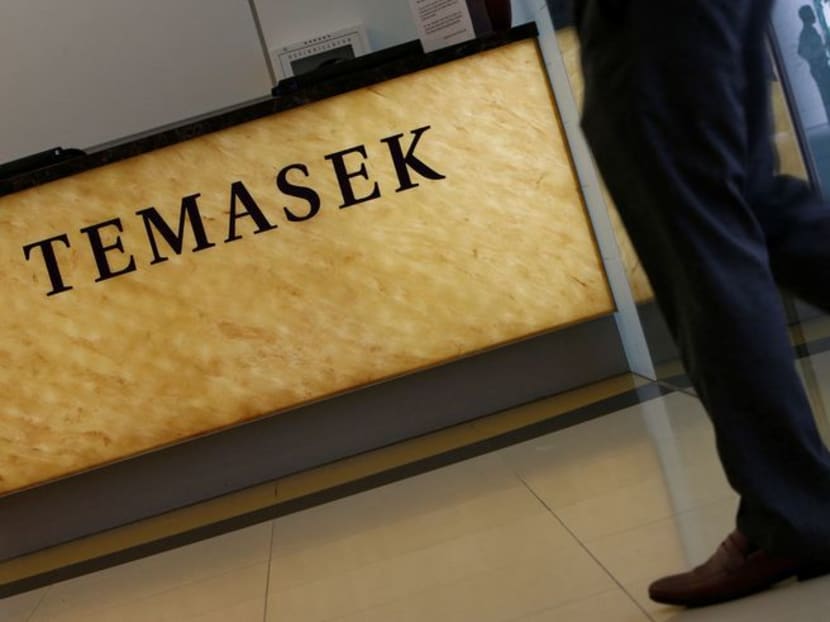Temasek Holdings' net portfolio value reaches record S$403 billion, made up of mostly unlisted assets for first time

- Temasek Holdings reported that its portfolio value rose by S$22 billion to set a new record of S$403 billion for the financial year ending March 2022
- Its one-year total shareholder return is 5.81 per cent
- Its 20- and 10-year TSRs is 8 per cent and 7 per cent compounded annually, respectively
- Temasek has invested S$61 billion and divested S$37 billion in the 2022 financial year
SINGAPORE — State investment firm Temasek Holdings reported on Tuesday (July 12) that its portfolio value rose by S$22 billion to set a new record of S$403 billion for the financial year ending March 2022. For the first time also, a majority of its portfolio consists of unlisted assets, or investments that are not listed on an exchange.
It also invested a record S$61 billion and divested S$37 billion in the 2022 financial year. This represents a net investment of S$24 billion. Last year's net investment was S$10 billion.
On Tuesday, Temasek said that the global economy is in a fragile state, with ongoing geopolitical uncertainties, rising inflation, surging commodity prices and severe supply chain bottlenecks uncovering further fault lines in the global marketplace.
Central banks have tightened their monetary policies to curb strong inflationary pressures, and economies are now more vulnerable, with key developed markets potentially facing a risk of recession.
Yet despite slowing growth prospects and the uncertain economic outlook, Mr Rohit Sipahimalani, Temasek’s chief investment officer, said that the firm “remains guided” by its investment philosophy to generate risk-adjusted returns over the long term.
“We will prudently manage the risks and opportunities arising from macroeconomic and market events,” he said.
“Taking into account the reasonable likelihood of a recession in developed markets over the next year, we maintain a cautious investment stance while staying focused on constructing a resilient portfolio underpinned by the structural trends we have identified.”
The firm added that its one-year total shareholder returns for the 2022 financial year is 5.81 per cent. Its 20- and 10-year total shareholder returns is 8 per cent and 7 per cent respectively, compounded yearly.
For comparison, last year's one-year total shareholder returns was 24.5 per cent, at a time when global economies just started recovering from the Covid-19 pandemic.
The total shareholder returns is a key measure of an investment company's portfolio performance. It includes all dividends distributed to its shareholders, but excludes any investments made by the shareholders.
UNLISTED ASSETS GENERATED HIGHER RETURNS
Temasek's portfolio value in unlisted assets has increased by about four times from S$53 billion a decade ago to S$210 billion, the state investment firm said.
Over the last decade, the firm’s unlisted portfolio has generated returns of more than 10 per cent a year.
Today, Temasek’s unlisted assets comprise 52 per cent of its portfolio, crossing the halfway mark for the first time in the 2022 financial year.
These include its investments in unlisted Singapore companies (36 per cent); other private companies including early-stage companies (26 per cent); asset management businesses (20 per cent); and private equity and credit funds (18 per cent).
Its investments in early-stage companies have given Temasek insights into innovation in technology and business models, which allow it to better assess future opportunities and gain a "deeper understanding of potential implications for our broader portfolio", the company said.
"Our unlisted portfolio offers us liquidity in the form of steady dividends from mature companies (such as Mapletree, SP Group and PSA), the distributions from the high quality portfolio of funds we have built up over the years, and the returns from when our unlisted assets are listed or sold."
At a press conference on Tuesday, TODAY asked whether having a majority of unlisted assets would be the firm's continuing strategy and what its outlook is for the unlisted assets.
In response, Temasek's head of strategic development Russell Tham emphasised that Temasek invests in good opportunities "regardless of whether it is listed or unlisted".
Pointing to the mix of investments among the unlisted assets in its portfolio, he described the portfolio as high quality and generating reasonable liquidity.
Mr Sipahimalani also said that Temasek does not necessarily see investment in unlisted companies as higher risk.
“In some sense, it’s lower risk because we can (carry out due) diligence on these companies much better; we have access to much better information,” he said.
While there is some form of illiquidity, which refers to a lack of buying and selling of a given asset, “we more than compensated for illiquidity premium based on the returns we’ve seen on this portfolio”, he added.
Mr Sipahimalani was then asked whether Temasek would adjust its portfolio of unlisted assets, given the recent sharp falls in various assets such as listed shares or if, perhaps, it would speed up investment in unlisted assets.
In response, he noted that the largest portion of Temasek's investment in unlisted assets comprised mature Singapore-based companies.
The remainder of its unlisted assets are “very diversified”, he said.
He added that Temasek is not looking at the immediate liquidity of the companies in the next 12 months or so and is “fairly confident” that they can do well.
Temasek "will have good exit opportunities both in the private and public markets in the next few years”, he said.
PORTFOLIO REMAINS IN ASIA
The state investor said that much of its portfolio, or about 63 per cent, “remains anchored in Asia".
Singapore, 27 per cent, and China, 22 per cent, continue to be the firm’s two largest countries by exposure.
It is also continuing to grow its portfolio exposure in the Americas (21 per cent) and in Africa, Europe and Middle East (12 per cent), which is in line with emerging trends and opportunities.
Overall, Temasek's exposure to developed economies — including Australia, Europe, New Zealand, North America and Singapore — increased to 65 per cent, compared with 55 per cent in 2011.
The firm also highlighted some examples of where its investments are going.
Last year, it took part in Singapore Airlines’ S$6.2 billion mandatory convertible bond issue, which helped to strengthen its balance sheet and “position it for the resumption of global travel”.
The firm also took part in Olam’s rights issue to fund the strategic acquisition of Olde Thompson, a United States-based manufacturer of spices and seasonings, and the accelerated transformation of Olam Food Ingredients.
Temasek helped strengthen Sembcorp Marine’s balance sheet and liquidity position as well by participating in its S$1.5 billion rights issue in 2021, which also allowed Sembcorp Marine to accelerate its strategic pivot into high-growth renewable and clean energy segments.
In China, Temasek continued to invest in the new economy sectors focusing on new consumption patterns, sustainability and innovation.
These included VX Logistics, a dry warehouse and cold chain developer and operator; Shanghai Hydrogen Propulsion Technology, a hydrogen fuel cell developer; and Whale Technologies, a digital marketing technology company.
In response to queries on the fact that China now makes up 22 per cent of Temasek’s portfolio, down from 29 per cent in 2020 and 27 per cent in 2021, Mr Sipahimalani said that China continues to be an important market for the firm.
“The movement in portfolio was entirely due to market price movements,” he said, replying to a question on whether Temasek had consciously chosen to “step away a little” from China's economy.
Mr Tham added that Temasek has remained invested in China for a long time and constantly adjusts its portfolio there based on policy and economic cycles.
EXPOSURE TO CRYPTO 'MINIMAL'
Temasek’s executives were asked about the opportunities that they saw in the cryptocurrency sector, given its investment in the crypto derivatives exchange FTX, and whether their outlook has been affect by the recent crypto crash.
Mr Martin Fichtner, Temasek's deputy head for technology and consumer, said that the firm’s focus is on how blockchain, as a technology, is an important innovation that will touch different parts of business and the economy.
Blockchain is the technology that underpins cryptocurrencies such as bitcoin.
“Our focus is broadly on blockchain-enabled solutions, platforms and infrastructure and some of the applications. An exchange is an example of that,” he said, adding that Temasek takes a long-term investment horizon in blockchain.
“Our exposure to cryptocurrencies is minimal, and is primarily through venture funds that invest in crypto-related projects and companies.” ADDITIONAL REPORTING BY TAUFIQ ZALIZAN








